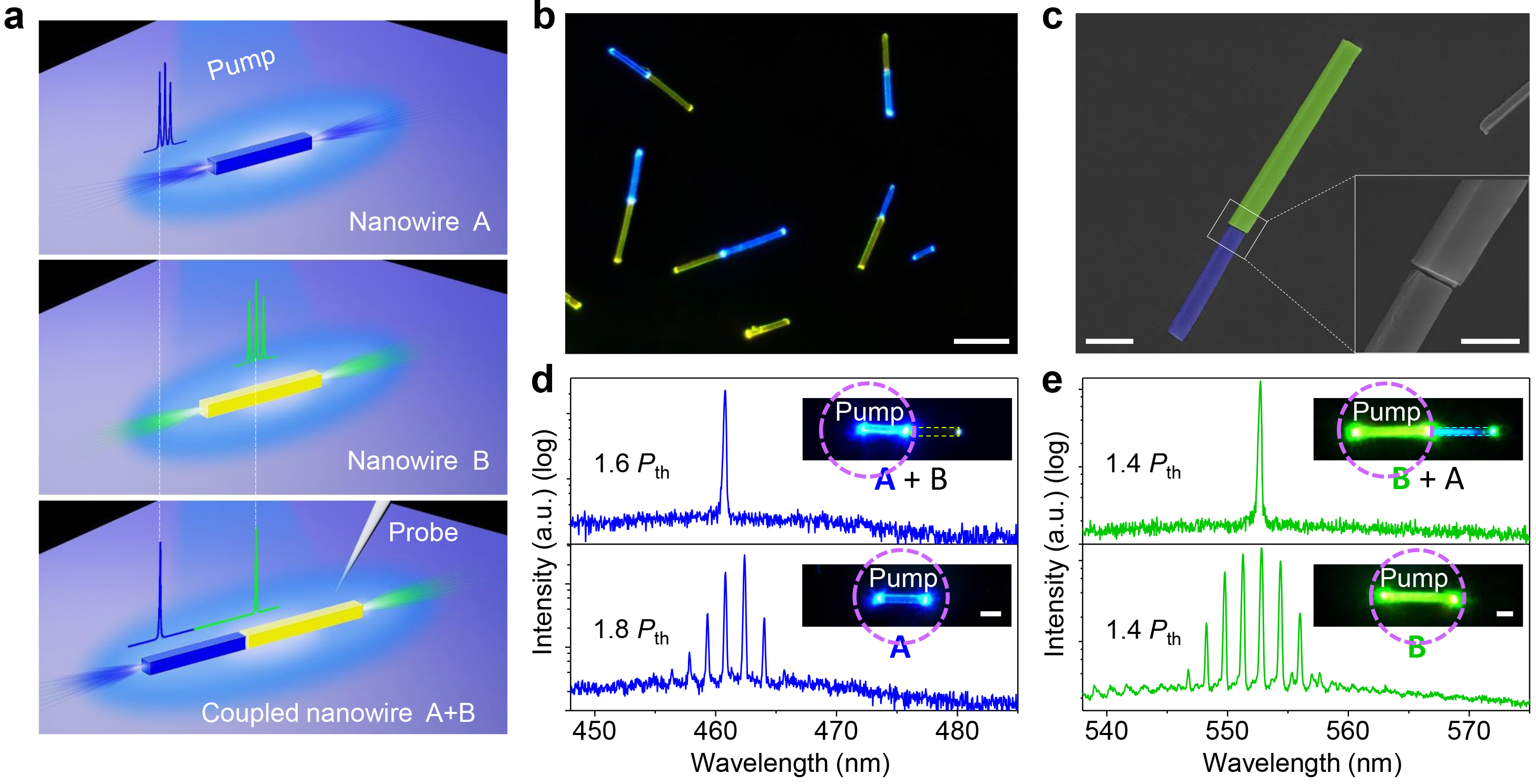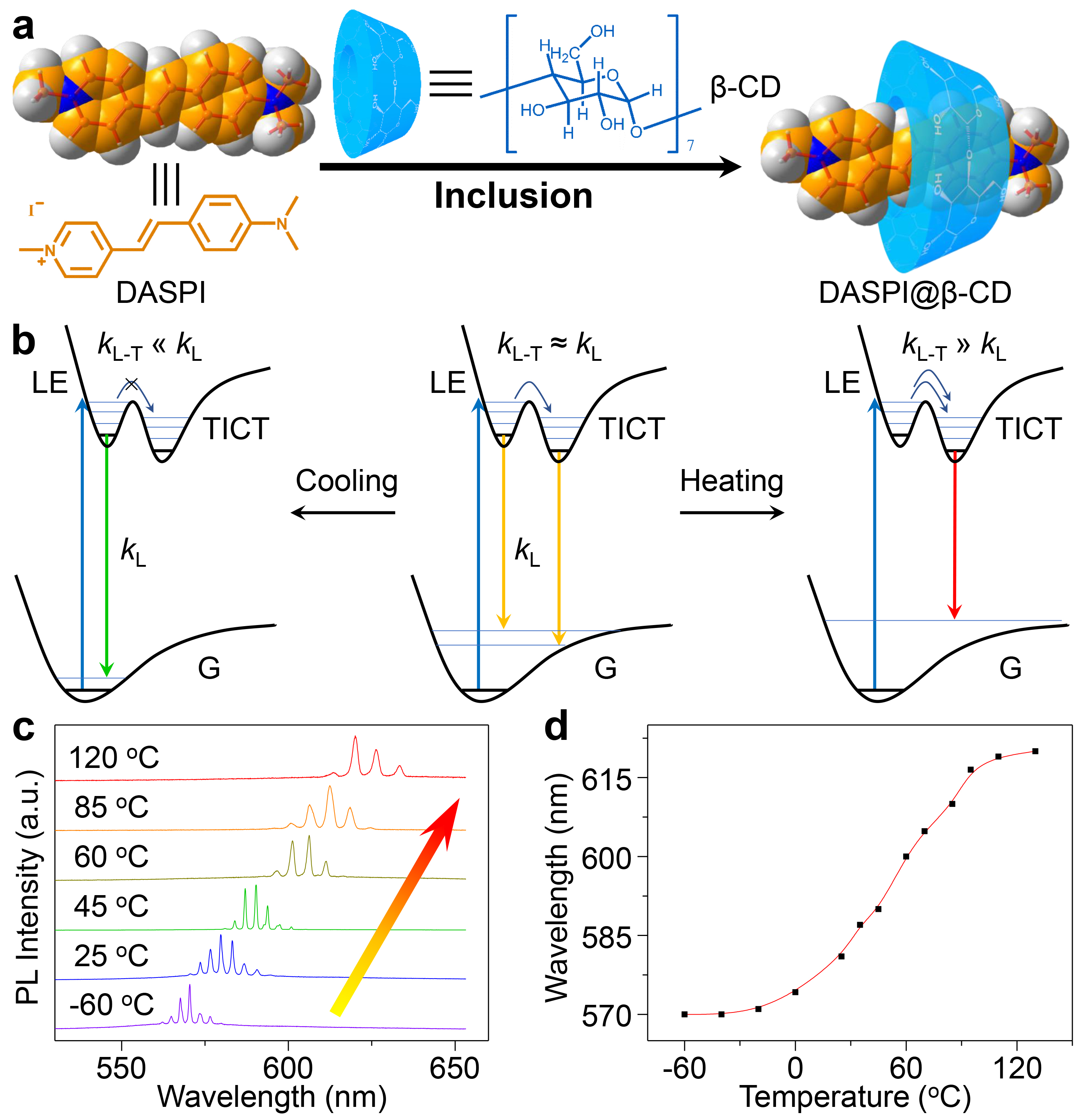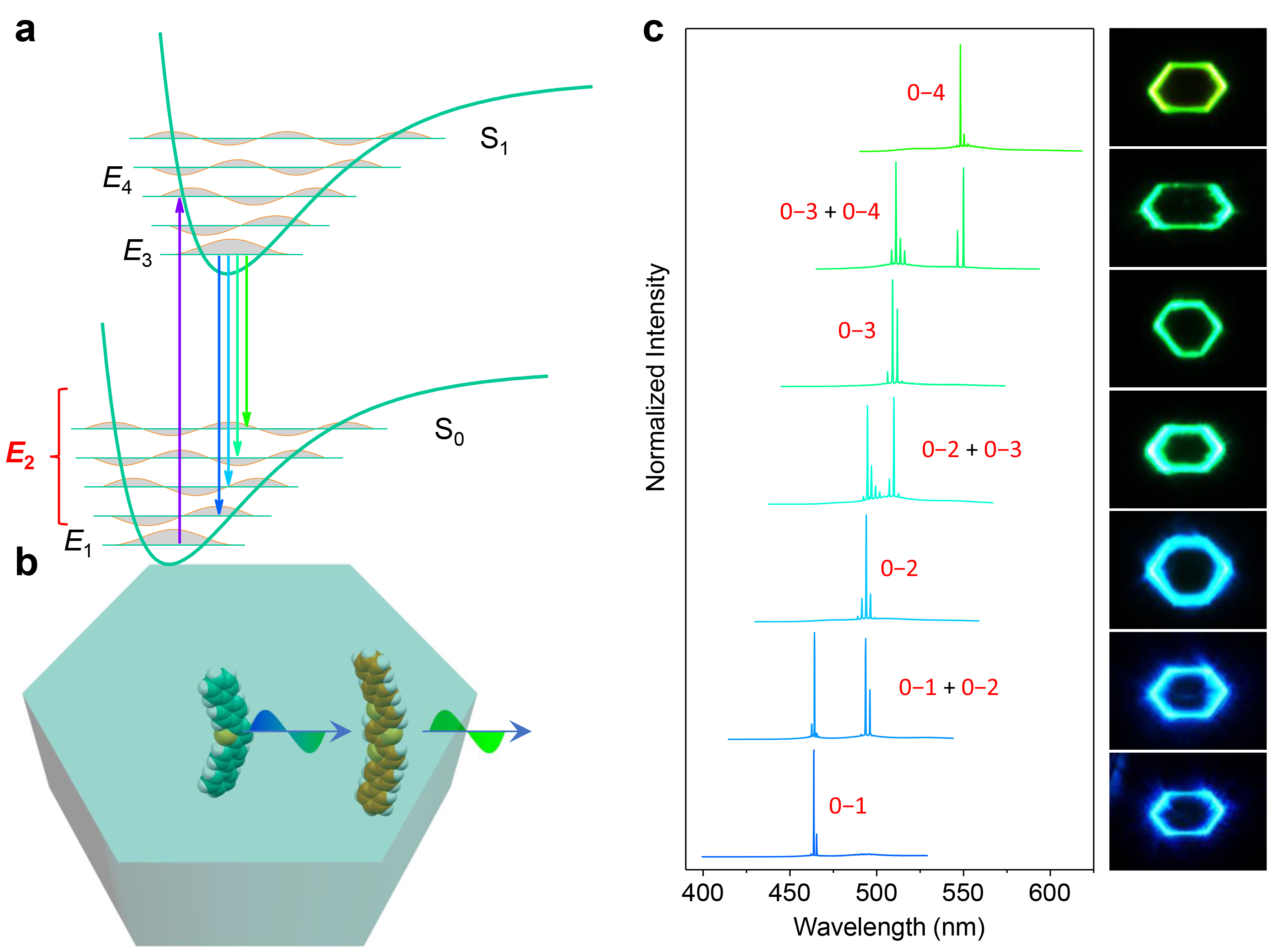 High-performance organic miniaturized lasers and excited state processes
High-performance organic miniaturized lasers and excited state processes
When the size of material is reduced to micro/nanoscale, the three essential factors of lasers (resonator, gain medium and pump source) are significantly different from those of traditional ones. The abundant excited state processes of organic materials provide a more effective and controllable way to construct energy levels for population inversion. As the physical dimension down to the optical diffraction limit, excitons-photon couplings bring brand-new characteristics, and the various spectral characteristics shown under stimulated emission offer a powerful approach to investigating excited state dynamics of organic materials in-depth.
1. Controllable fabrication of organic micro/nano resonators with specific laser performance
We have designed and synthesized dozens of microstructures to clarify the influence of intermolecular interactions on assembly processes(Acc. Chem. Res. 2014; Chem. Soc. Rev. 2014). Different microcavity structures, including Fabry-Pérot (F-P) mode resonators and whispering-gallery-mode (WGM) resonators have been achieved based on controllable molecular recognition-dominated assembly (Angew. Chem. Int. Ed. 2013; J. Am. Chem. Soc. 2015; Adv. Mater. 2016).
Multi-wavelength single-mode laser through mode selection of coupled resonant cavity (Sci. Adv. 2017, 3, e1700225)
In order to achieve microstructure with specific lasing behaviors, we have designed various composite resonators. For example, organic/metal micro-nano composite structures were constructed to acquire sub-wavelength laser output below optical diffraction limit through photon-surface plasmonic polariton (SPP) coupling (J. Am. Chem. Soc. 2016; J. Am. Chem. Soc. 2017). Further, we fabricated coupled resonant cavity systems, and multi-wavelength single mode laser was realized via the mutual selection of laser modes in multiple gain regions (Sci. Adv. 2017; Angew. Chem. Int. Ed. 2020; CCS Chem. 2021).
2. Construction of microlasers with special performances based on distinct excited state process of organic materials
Generally, stimulated emission from organic lasers is based on a quasi-four-level structure formed by different vibrational energy levels of the ground state (S0) and the first excited state (S1). The abundant excited state processes of organic materials provide a possibility to construct a real four-level structure that is more conducive to laser emission. We chose a compound with excited-state intramolecular proton transfer (ESIPT) process to prepare high-quality one-dimensional single crystal resonators. Based on the interconversion of the enol-type (E) and the keto-type (K) between ground states and excited states, a complete four-level system is constructed for low-threshold microlasers with switchable wavelength (Angew. Chem. Int. Ed. 2015).
Broadband tunable organic microlaser based on intramolecular charge transfer process (J. Am. Chem. Soc. 2016, 138, 1118)
Furthermore, we designed compounds with intramolecular charge transfer (ICT) features as gain materials. A novel lasing mechanism based on the synergistic gain of two upper energy states was proposed based on steady-state and transient spectral results, providing a new strategy to tailor the gain region by controlling the population distribution between the two upper energy states. Broadband continuously tunable lasing has been achieved in organic supramolecular crystals by effectively modulating thermo-responsive ICT processes (J. Am. Chem. Soc. 2016; Adv. Mater. 2016).
3. Re-understanding of organic photochemical and photophysical processes
Widely tunable organic microlasers beyond the Franck-Condon principle(Angew. Chem. Int. Ed. 2018, 57, 3108)
Organic materials exhibit novel optical characteristics once stimulated emission occurs, such as spectra narrowing, optical modes competition and decay lifetime compression. These phenomena correspond to the evolutions in excited state processes, and therefore the laser emission provides new opportunities for in-depth comprehension of traditional excited-state physical and chemical processes. Through steady-state and transient spectroscopy techniques, we clarified the intrinsic mechanism of organic vibration lasers and revealed the influence of the gain-loss relationship at different vibration bands on the output wavelength of the laser.
On this basis, we proposed an approach to tailoring relative gain density at different vibration bands by thermally controlling population distributions, and switchable lasing between 0-1 and 0-2 vibrational energy levels was realized (Nano Lett. 2017). The output range of organic microlasers can be broadened by adjusting the vibration radiation. By ntroducing absorbers, we succeeded in breaking the Franck-Condon principle that limited the width of gain region, and controllable output of organic lasers in all vibration bands (0–1, 0–2, 0–3, and 0–4) was realized for the first time (Angew. Chem. Int. Ed. 2018).
Moreover, crystalline p-n junctions were fabricated through dispersing electron acceptors in electron donors. Narrow-bandgap charge transfer (CT) complex is uniformly formed in the host matrix, which served as an artificial light-harvesting system. By adjusting the degree of CT, continuous tuning of lasing wavelength from green to red has been realized. This laser behavior based on the luminescent CT state is expected to overcome the singlet limitation under electrical pumping (Sci. Adv. 2019).
Inspired by thermally activated delayed fluorescence (TADF) materials, we proposed a strategy to deal with triplet losses in organic solid-state lasers through reverse intersystem crossing (RISC) processes. A thermally activated lasing was observed for the first time, directly indicating that triplet excitons were captured by the RISC process and then contributed to the stimulated emission of singlet state. This unique mechanism was further applied to the more challenging field of organic quasi-continuous laser, and we finally succeeded (Angew. Chem. Int. Ed. 2020).
Thermally activated lasing in organic solid-state lasers (Angew. Chem. Int. Ed. 2020, 59, 21677)



